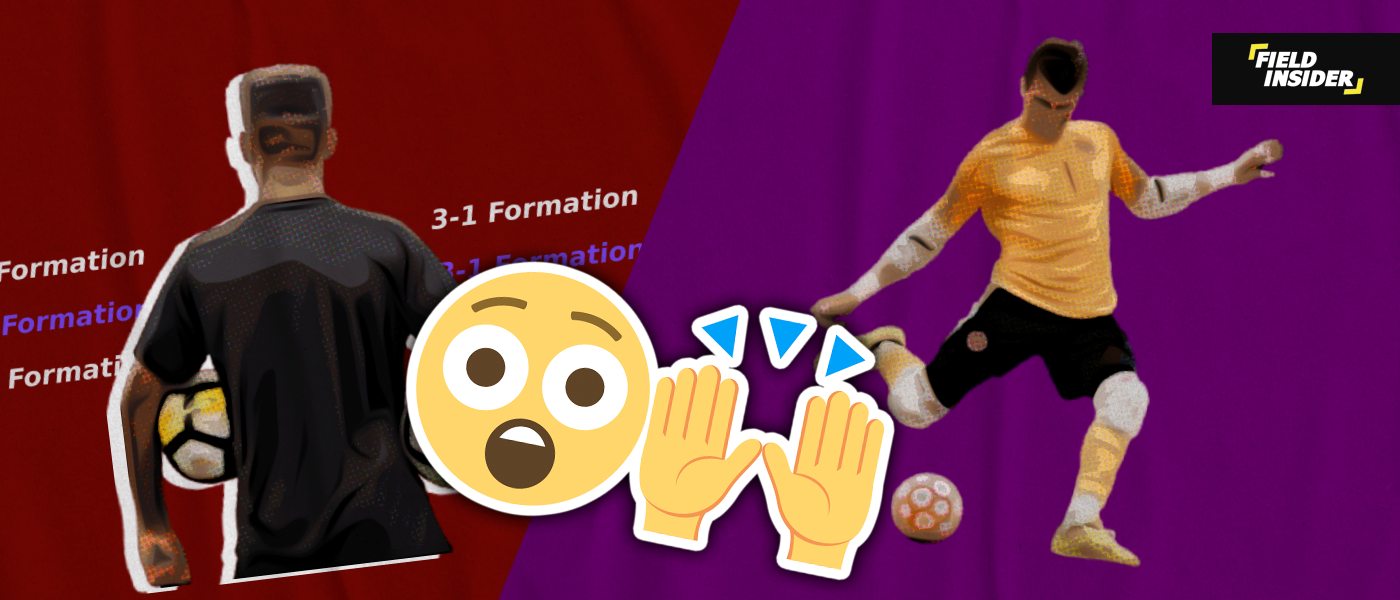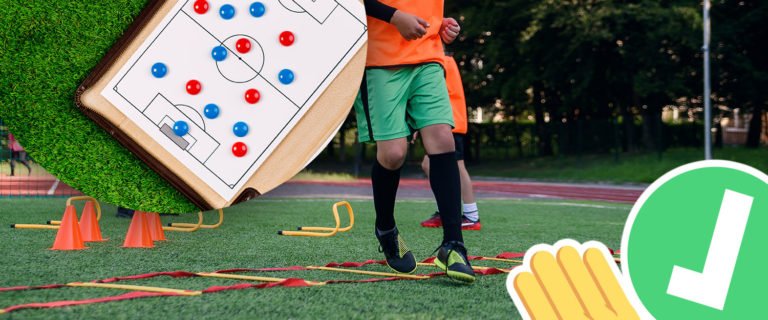The Best Futsal Formations: Top 4 Formations
Choosing the best futsal formations is crucial for teams aiming to dominate the court. Whether you’re a seasoned coach or a new player, understanding the dynamics of the best futsal formations can significantly impact your team’s performance.
This article aims to explore the strategic depths of futsal, highlighting the strengths and weaknesses of the most popular and effective strategies. By delving into the nuances of the best futsal formations, teams can tailor their approach. This tailoring helps to suit their style, strengths, and objectives.
Key Takeaways
| Formation | Description | Advantages | Disadvantages | Ideal For |
|---|---|---|---|---|
| 2-2 | Two defenders, two attackers | Balance and stability | Can be predictable; Less fluid | Teams valuing equal defensive and offensive strength |
| 3-1 | Three forwards, one defender | High offensive potential | Vulnerable to counter-attacks | Teams with strong offensive capabilities |
| 1-2-1 | Flexible with quick transitions | Adaptability; Good for counter-attacks | Requires well-rounded players | Teams preferring flexibility and speed |
| 4-0 | All-out attack, no fixed defender | Unpredictable; Dominates possession | Risky if ball control is lost | Teams with excellent ball handling and rotation skills |
Formation Basics
Futsal formations are designed to maximize a team’s offensive and defensive capabilities within the limited space of a futsal court. The right formation can exploit the team’s strengths and mitigate weaknesses, significantly impacting the game’s outcome.
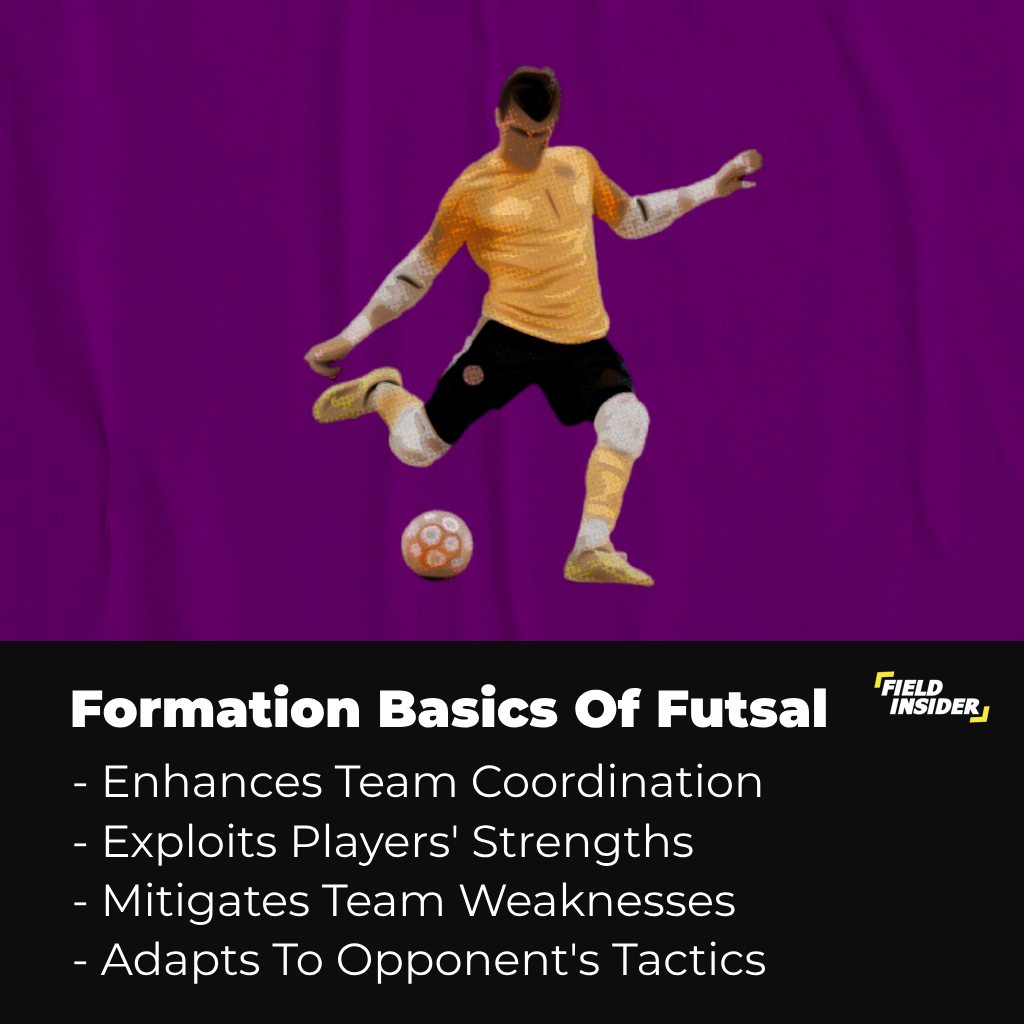
Factors influencing the choice of formation include player skills, opponent strategy, and game circumstances. The selection hinges on player abilities and the tactics of the opposition. It also depends on the specific demands of each match situation, requiring careful consideration and strategic planning.
2-2 Formation: A Classic Approach to Futsal
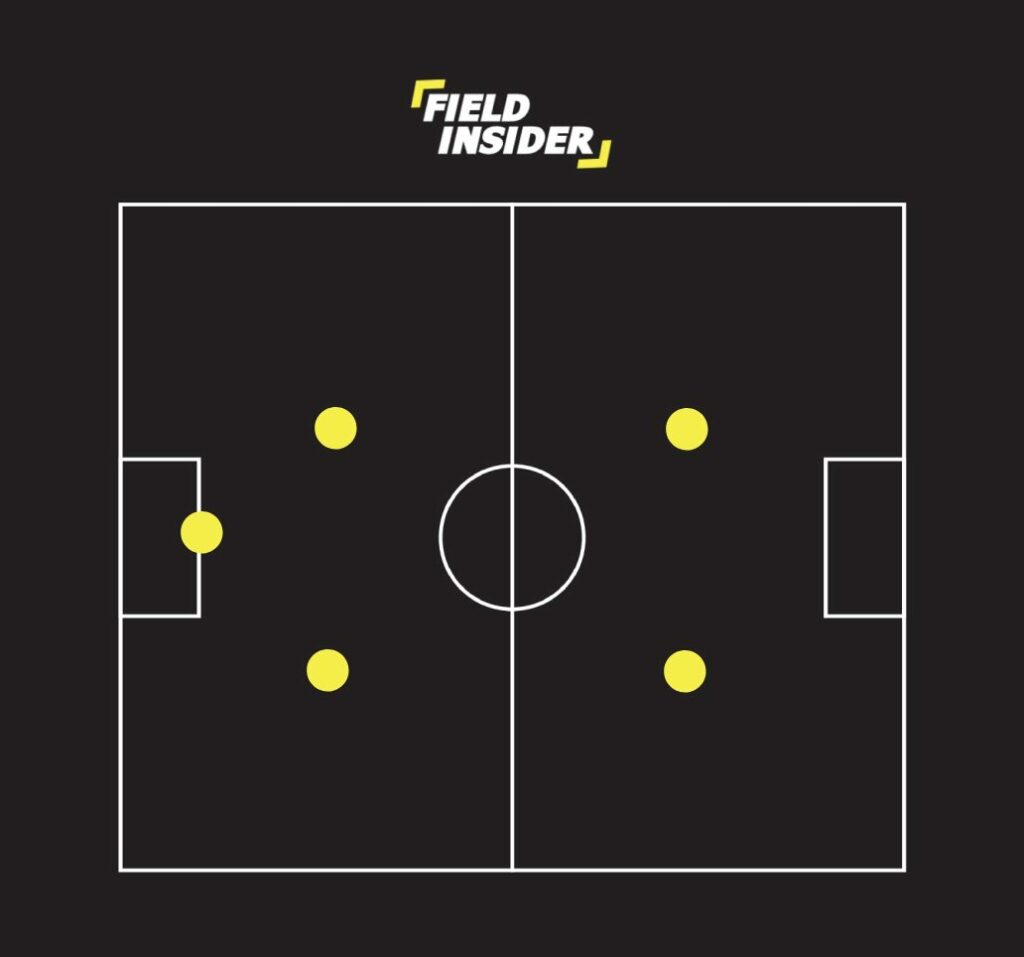
Description and Setup
The 2-2 formation stands as one of the best futsal formations, embodying a perfect equilibrium between offensive thrusts and defensive solidity. In this tactical layout, two players fortify the defense. The other two press ahead, aiming to disrupt the opposing team’s lines.
This structures provides a well-rounded approach, ensuring teams are equally fortified against attacks as they are poised for offensive ventures.
Advantages
The main allure of the 2-2 formation is its balanced nature, offering teams a solid foundation in both defense and attack. This equilibrium allows for controlled play, where teams can defend deep but also push forward with assurance.
It’s an ideal setup for teams that prefer a methodical approach, prioritizing organization and a clear division of roles on the pitch, ensuring that players are well-positioned to respond to various game situations.
Disadvantages
While stability is a hallmark of the 2-2 formation, its conventional nature can lead to predictability. Teams employing this setup might struggle against opponents who use more dynamic and fluid formations.
The rigidity can hinder swift transitions from defense to attack, potentially giving agile adversaries the upper hand during fast-paced encounters.
Ideal For
This formation is tailor-made for teams that prize structure and stability over high-risk strategies. It suits squads that emphasize a disciplined approach, ensuring that each player knows their role and sticks to it.
For those looking to delve deeper into structuring a balanced team, exploring concepts like 5-a-side defending can provide additional strategies on maintaining equilibrium between attacking prowess and defensive resilience.
3-1 Formation: Aggressive Attacking Strategy
Description and Setup
The 3-1 formation is known for its aggressive attacking strategy, positioning three forwards at the front to maximize offensive presence. Meanwhile, one defender guards against counterattacks. one defender at the back to safeguard against counterattacks.
This formation is tailored for teams aiming to dominate possession and aggressively challenge the opponent’s defense, making it a popular choice among teams with confident, attack-minded players.
Advantages
The primary advantage of the 3-1 formation lies in its high offensive potential, enabling a team to apply continuous pressure on the opposition’s defense.
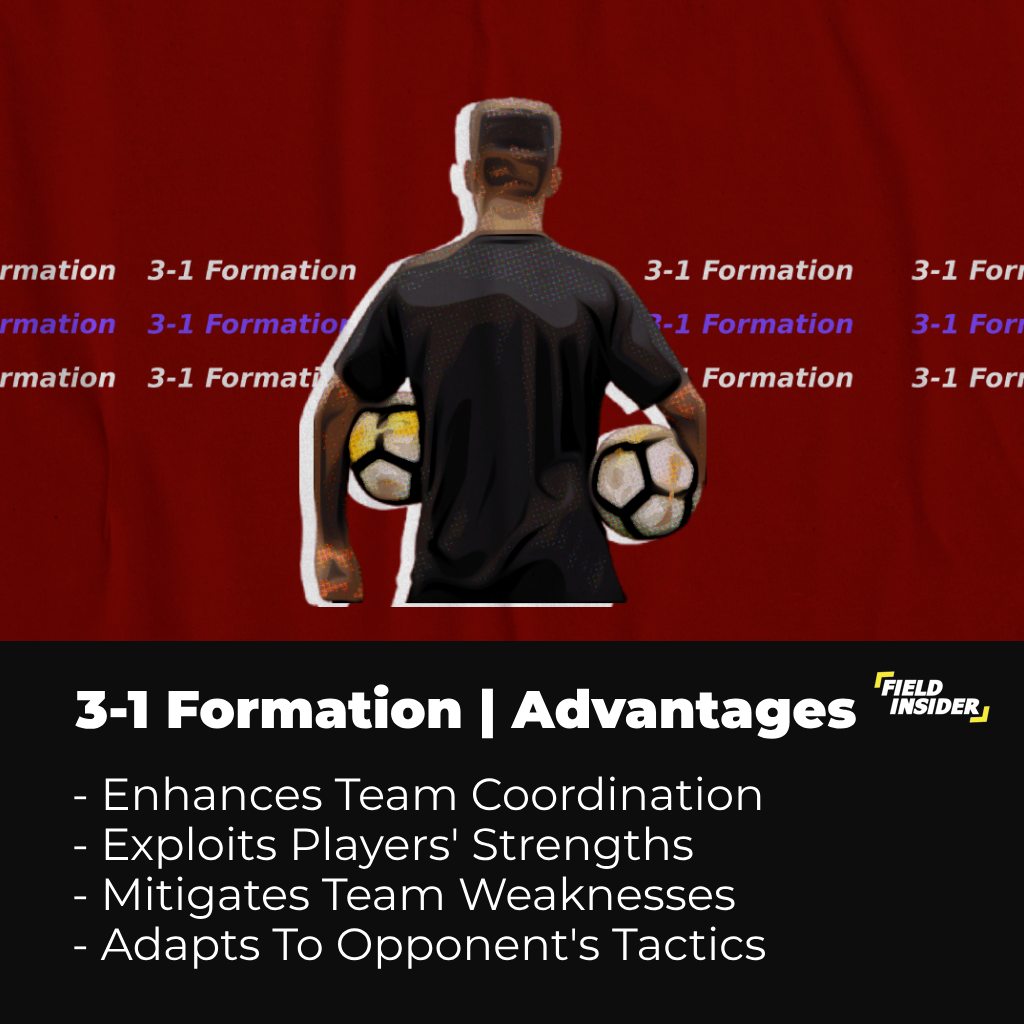
This aggressive setup is designed to create numerous scoring opportunities, making it ideal for teams with strong, forward-focused players who are skilled at maintaining offensive momentum and exploiting gaps in the defense.
Disadvantages
However, this formation’s aggressive nature leaves it susceptible to counter-attacks, posing a significant risk if the team loses possession.
The sole defender must exhibit exceptional defensive qualities, as the team is left vulnerable at the back, requiring players to have not only stamina but also a strong sense of defensive discipline to recover quickly and efficiently.
Ideal For
The 3-1 formation is best suited for teams excelling in offensive play. They must maintain high-pressure tactics and possess enduring stamina. It is particularly effective for teams with potent attackers and those adept at quick transitions from defense to offense.
Coaches and players can further explore similar strategies and player roles in sections like attacking football positions, which delve into optimizing team setups for aggressive play.
1-2-1 Formation: Flexibility and Swift Transitions
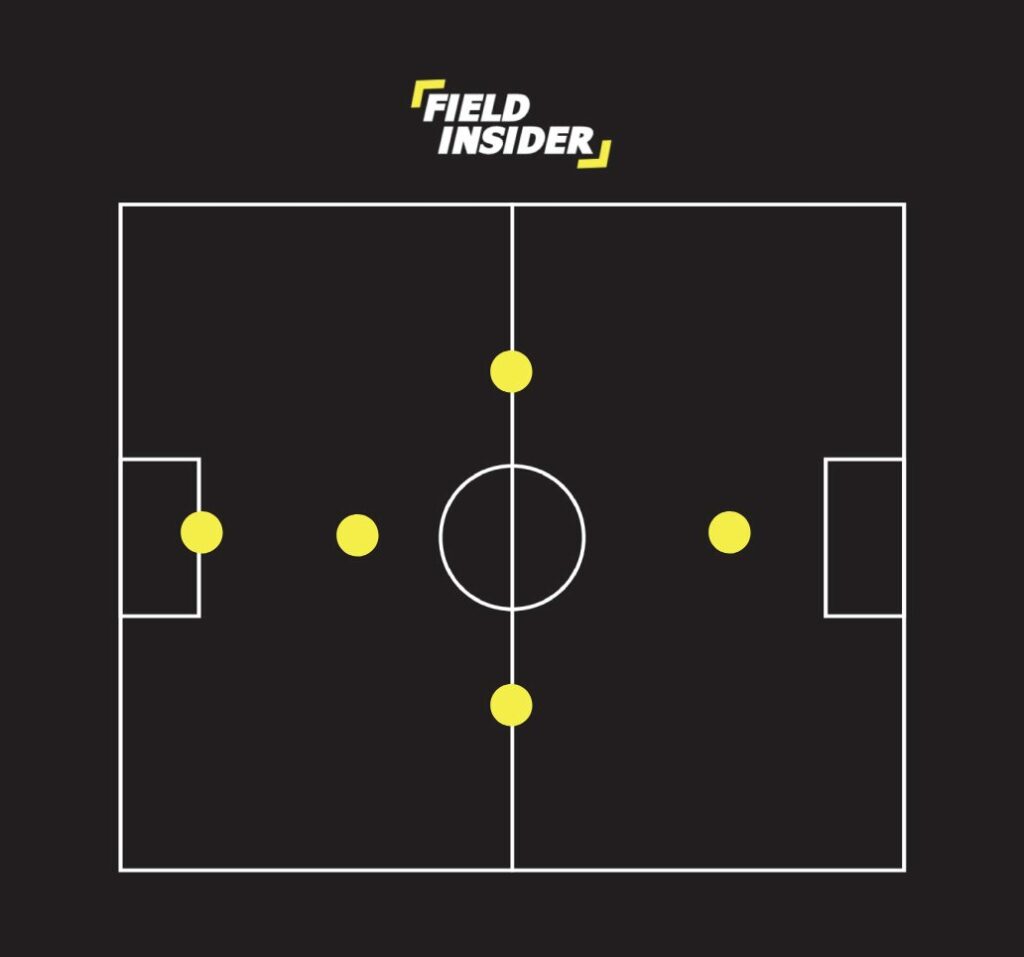
Description and Setup
The 1-2-1 formation is also one of the best futsal formations. It prioritizes flexibility and is designed for swift transitions between defense and attack.
The 3-1 formation suits teams excelling in offensive play, requiring high-pressure tactics and enduring stamina for effective execution. This setup is well-suited for teams that adapt quickly to changing game dynamics.
Advantages
The main advantage of the 1-2-1 formation is its adaptability, allowing teams to shift seamlessly between offensive and defensive modes. This flexibility is key in responding to the opponent’s strategies and exploiting openings.
The formation is tailored for quick counter-attacks and is effective in managing both defensive responsibilities and attacking opportunities.
Disadvantages
The primary drawback of this formation is its demand for well-rounded players, as each individual must be capable of performing multiple roles efficiently.
This requirement can strain teams lacking in versatile players or those not accustomed to rapid role transitions, potentially leading to gaps in either defense or offense if not managed correctly.
Ideal For
This formation is ideal for teams that excel in adaptability and possess players with versatile skill sets. It’s particularly effective for teams that favor a balanced approach, capable of quickly switching from defense to attack.
For teams looking to implement this dynamic strategy, exploring sections like counter-attack in futsal can provide additional insights and tactics for maximizing the effectiveness of the 1-2-1 formation.
4-0 Formation: Total Control and Continuous Movement
Description and Setup
The 4-0 formation in futsal is an innovative strategy that emphasizes total ball control and continuous player movement. This setup eliminates the traditional defender role, instead opting for four outfield players who rotate. Moreover, it shares defensive and offensive duties as well.
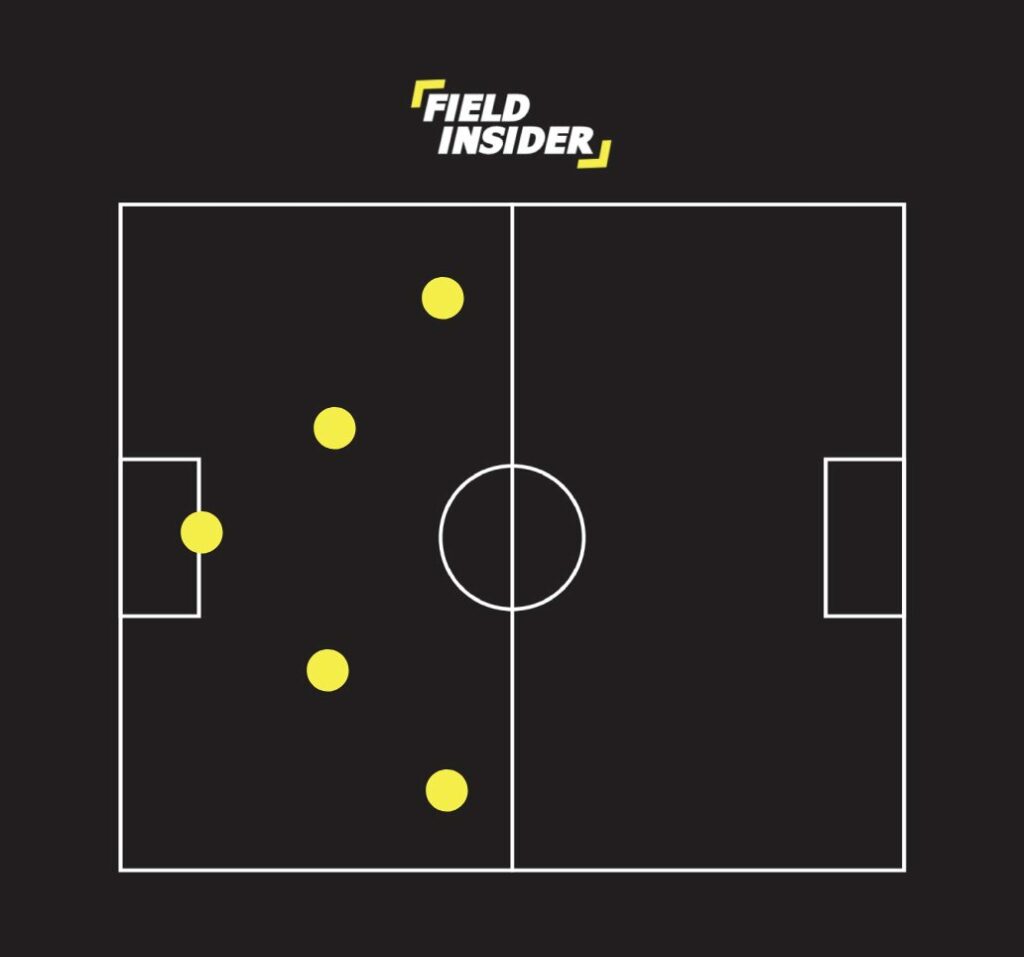
It’s a demanding formation that relies on exceptional teamwork, understanding, and technical skills.
Advantages
The main advantage of the 4-0 formation is its unpredictability and dynamic nature. By constantly rotating positions, players can disorient the opposition, creating mismatches and exploiting defensive gaps.
This formation is excellent for maintaining possession and dictating the pace of the game, making it hard for opponents to anticipate the next move.
Disadvantages
However, the 4-0 formation is highly risky, as losing ball control can lead to immediate vulnerability at the back. It requires players to have not only high technical skills but also excellent physical conditioning and spatial awareness.
Teams using this formation must be adept at recovering quickly and efficiently to avoid conceding goals from rapid counter-attacks.
Ideal For
This formation is best suited for teams with highly skilled players who excel in ball handling, positional awareness, and teamwork. It’s particularly effective for teams that can sustain high levels of concentration and coordination throughout the match.
Those interested in adopting this fluid style of play might benefit from studying concepts in 5-a-side attacking, which further elaborates on maintaining control and creating scoring opportunities in small-sided games.
Mastering Futsal: Intensity and Formation Tactics
The findings from the study, “Physical and physiological demands of futsal” are shown in the graph. The graph illustrates the varying intensity levels players encounter during a futsal match, significantly influencing game dynamics and player performance.

Low-intensity efforts occur frequently, enabling players to maintain position and form. Conversely, high-intensity efforts, though less frequent, are crucial for sudden offensive or defensive shifts, underscoring the importance of choosing the best futsal formation for your team’s style and stamina.
Understanding these intensity shifts can help coaches decide between formations like the balanced 2-2, the aggressive 3-1, the flexible 1-2-1, or the dynamic 4-0. Each formation caters to different player strengths and match situations, directly impacting how a team responds to the game’s physical demands.
Conclusion
In conclusion, choosing the right futsal formation is crucial for any team looking to capitalize on its strengths and mitigate its weaknesses. Whether it’s the balanced approach of the 2-2 formation, the aggressive offense of the 3-1, the adaptable 1-2-1, or the dynamic and risky 4-0, each strategy offers distinct advantages and challenges.
When selecting a futsal formation, consider factors such as player strengths, opponent strategies, and game objectives. Whether you aim for a solid defense, a relentless attack, or adaptable gameplay, the right formation can make all the difference in achieving futsal success.


